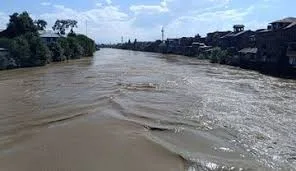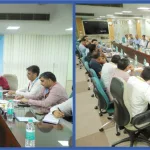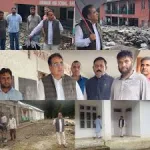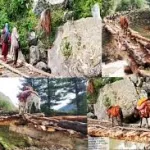Srinagar, Sept 07: The Environmental Policy Group (EPG) today paid heartfelt tribute to the resilience of the people of Jammu & Kashmir on the eleventh anniversary of the devastating 2014 floods, one of the worst natural disasters in the region’s recent history. According to a statement issued here, the Group expressed its deepest condolences to families who lost their loved ones and saluted the courage of those who rebuilt their lives after the catastrophe, despite continued vulnerability to floods.
The EPG recalled that in the immediate aftermath of the floods, it had filed a Public Interest Litigation (PIL) titled EPG vs Union of India & Others before the Division Bench of the High Court of Jammu & Kashmir. The petition named 16 departments of the Union Government and J&K Government as respondents and highlighted many matters related to prevention, mitigation and rehabilitation, sought judicial intervention to increase the carrying capacity of the Jhelum and conserve its associated water bodies.
The High Court passed a slew of path breaking orders, issued repeated directions to various departments, some of which were implemented. However, despite these judicial pronouncements, remedial measures have not been implemented in any meaningful manner.
The floods of September 2014 in Jammu & Kashmir caused unparalleled destruction, wiping out villages, bridges, hospitals, and critical infrastructure, while depositing massive amounts of silt and debris that further choked the Jhelum. In Jammu, too, floods wreaked havoc, damaging roads, homes, and farmlands. Yet, more than a decade later, the Jammu & Kashmir regions remain as vulnerable as they were in 2014, with no comprehensive long-term strategy in place to prevent a recurrence.
EPG stressed that the present vulnerability is not the result of natural forces alone, but the direct consequence of decades of human-induced degradation. The denudation of catchment areas through illegal tree felling, unregulated land use, and overexploitation of forests, bulldozing mountains to construct roads, deep river bed mining using forbidden heavy machinery instead of permitted manual process, has stripped the Valley of its natural capacity to absorb rainfall.
The natural bowl-shaped topography of the Valley compounds this risk. As the Jhelum descends from steep mountain slopes into the flat basin of Kashmir, especially from Srinagar to Wular Lake, its velocity slows and sediment settles, progressively reducing the river’s carrying capacity.
Equally alarming is the steady shrinkage and degradation of wetlands that once acted as natural sponges. Instead of absorbing excess water and moderating floods, these wetlands are steadily losing their function, leaving the Valley without its natural buffers.
The EPG underlined that abject failure in increasing the carrying capacity of Jhelum, Flood Channels, wetlands has caused unspecified damage to life, property, agriculture, horticulture and businesses, besides causing trauma to the people of Jammu & Kashmir every time it rains for a day or two. The immediate task for the Government is to increase the carrying capacity of the Jhelum /Flood Channel & other water bodies. The process of shoddy dredging executed earlier should be done away with. EPG cautioned that dredging must be scientific and continuous, not piecemeal or cosmetic. After the 2014 floods, dredging operations were initiated but abandoned halfway, without addressing the river’s natural hydraulic gradient. For dredging to be effective, it must be preceded by satellite-based surveys and sediment transport studies to identify critical stretches, while dredged material must be disposed of scientifically to avoid further ecological damage. Maintenance dredging must become a year-round process, supported by monitoring and transparent reporting.






